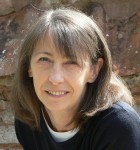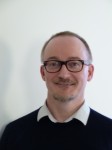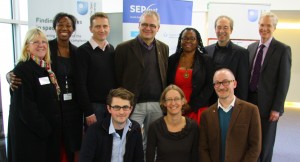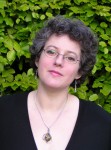
Ann Grand
Ah, the irony. A workshop on how researchers use social media that was conducted entirely through the medium of a board game and cut-out paper snakes.
Continue reading


Ann Grand
Ah, the irony. A workshop on how researchers use social media that was conducted entirely through the medium of a board game and cut-out paper snakes.
Continue reading
On Friday 4th April 2014 the Science Communication Unit (SCU), at the University of the West of England, Bristol held its second Evolving Science Communication conference. I talked about the run up to this conference in a previous post.
The conference celebrated 10 years of science communication programmes based at the SCU and it was lovely to see that around a fifth of delegates on the day were our graduates.
The programme was packed with interesting plenary talks, vibrant presentations and quick paced PechaKucha chats. The Science Communication Unit @SciCommsUWE Twitter feed captures some of the online discussion, and we’ve also created a Storify of the day.
On Friday 4th April 2014 I’ll be involved in hosting the second conference in our Evolving Science Communication series. You can find details of the first, held five years ago, in this report.
This conference celebrates 10 years of science communication programmes based at the Science Communication Unit (SCU), University of the West of England, Bristol. We’ve been delighted to work with our graduates to design a conference programme that we hope appeals to them, as well as to others currently working in and/or researching the ‘field’.
Continue reading

Dr Richard Holliman, The Open University
Teamwork is key to successful planning
When we’re producing courses at the Open University we tend to work in teams; many of them are multi-discplinary and almost all of them combine academics with other forms of professional expertise (e.g. editors and media professionals). For example, the last course I chaired (with the catchy code, SH804) involved more than 70 people during the production phase (including academics, media professionals, editors, librarians and web developers).
Over the years I’ve been lucky enough to work with some excellent colleagues in various course teams. You might expect me to say that. But it’s not always straightforward working as a social scientist in a Faculty of Science. One of the many colleagues I’ve really valued working with is Professor Simon Kelley. We worked together as part of a larger course team on Science in Context.

Back row, l-r: Janet Goss, Diane Ford, Gareth Davies, Andrew Norton, Janice Ansine, Simon Kelley and Tim Blackman. Front row, l-r: Frazer Bird, Clare Warren and Richard Holliman. Photo: Kate Bradshaw
Serendipity meets planning for diversity and inclusion
Spin forwards several years: I’d been working on the Engaging Opportunities project for about nine months when we began to think seriously about organising the first of the three annual lectures that we’d promised RCUK we would deliver.
A conversation with Simon Kelley at the regular departmental coffee morning led to a collaboration with colleagues from the Denbigh Teaching School Alliance, Centre for Physical and Environmental Sciences (CEPSAR), eSTEeM, the OU’s AV team and our Research, Scholarship and Quality Unit.
Continue reading
I’m an astrophysicist and my research is mainly concerned with what may be called the “time domain universe”, or simply: stars whose brightness varies with time.
Stars can have a variable brightness for one of several reasons: they might be intrinsically variable due to pulsations of the star’s atmosphere; they might be in orbit with another object that periodically passes in front of it; or they might suffer some form of catastrophic change that causes flaring or outburst behaviour, for instance.
One way to carry out research in time domain astrophysics is simply to monitor the brightness of all the stars in the sky and see what you find. This is, in effect, what is done by the WASP (Wide Angle Search for Planets) project, of which I and others at the Open University are part.
A day in the life of a field geologist
Earth Scientists like me study the Earth: how it formed, how it changed over geological time, and how all the different ‘bits’ such as the atmosphere, oceans, soil and rocks interact with each other.
In detail, I’m a geologist – I specifically try to understand the rocks beneath our feet. And in even more detail, I’m a field geologist. Nothing excites me more than the prospect of getting to spend weeks in a tent up a remote mountain somewhere (although preferably not in the rain), collecting rock samples for analysis back in the lab.
‘Like asking a child to drive a bus …’: on seeing the publics of public engagement as citizens, not children
Last Monday (13.1.14), I joined the Open University’s ‘Engaging Research’ seminar series to share some research I’ve been doing on Scotland’s transition to a low-carbon society. Energy has always been a hugely important part of Scotland’s identity, and is set to continue to be a key part of the debates in advance of the Referendum for Scottish Independence in September 2014.
My particular interests lie in what the public engagement landscape has to say about, or how it contributes to, this ambitious transition. Fairly quickly, we can identify a disjunction between public policy priorities and the public engagement taking place from universities and the science communication infrastructure (by which I mean science centres, science festivals and informal science engagement practice). This gap is really interesting when you think about it, and in the discussion at the end of the talk we explored it a little further.
A couple of months ago I was asked to give evidence to the House of Commons Science and Technology Select Committee as part of their enquiry into Women and STEM. What they wanted to know was why there was still a problem for women in achieving senior levels in STEM academic careers. Having recently led the OU’s successful submission for an Athena SWAN Bronze Award and having researched and written about gender and STEM for many years, I was asked to represent the OU and discuss what universities can do to help alleviate this situation.
I am a palaeoecologist at the Open University. My research involves reconstructing how our planet has changed over longer time scales in the past (1-2 million years). At first glance my research does not seem entirely relevant to current climate change but in fact it is integral. The climate system is hugely complicated and we still don’t fully understand how all the aspects work or how they interact together. One way of learning how the system operates is to simply observe it. The longer you observe it; then the better you will understand how it works and what are the possibilities for how it may change.
JuxtaLearn is a 3-year EU-funded project that has just passed the one-year mark and we are currently working to implement the technical aspects of the JuxtaLearn Process that we have developed.
In our presentation we give a little more detail about the challenges and findings from our first year. We showcase some of the videos made by the partners in the project to express their vision. One of these, the Teddy video, describes our efforts to come to a shared understanding of the project between the partners on the project, as well as introducing the workshops we held with teachers in school.

Anne Adams
The goal of the JuxtaLearn Project is to enable students to overcome barriers to science and technology learning by exploring and sharing their understanding using creative video performance. By engaging student curiosity in difficult-to-learn science and technology subjects, the JuxtaLearn Process supports them along a creative route to a deeper understanding of topics that the teachers have identified as particularly problematic. The JuxtaLearn Process is illustrated, graphically, in Figure 1.